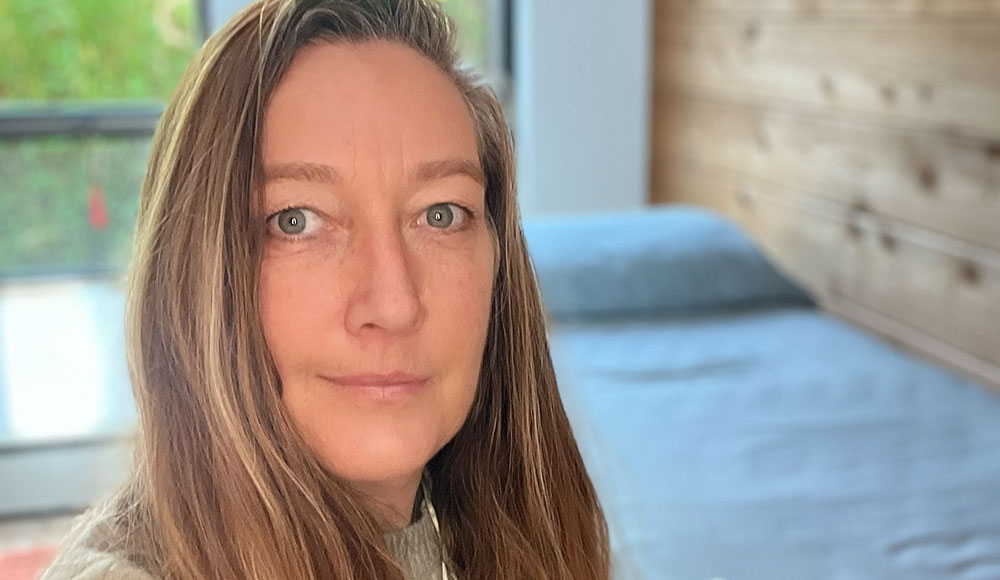Amber Monaghan’s journey into sound healing wasn’t just a career shift—it was a calling. Decades ago, she experienced what she describes as a spiritual awakening, one that sent electrical sensations through her body and left her searching for answers. That search led her to Dr. Jeffrey Thompson, founder of the Neuroacoustic Research Foundation in San Diego, and his work in therapeutic audio research.
Thompson had developed a method of recording personalized sounds said to shift the nervous system from a state of stress and imbalance into a space of deep healing, emotional release and spiritual clarity. From the moment Monaghan lay down on his table and heard the resonant hum of her own biotone—a tone unique to her nervous system—something clicked. Her upbringing as the daughter of a chiropractor and a recording studio owner suddenly made sense. Sound wasn’t just something you hear; it was something you feel, something that could heal.
Today, Monaghan runs Light and Sound Spas, a Santa Cruz-based practice where she guides clients through the seven stages of Bio-tuning. The process uses custom soundtracks embedded with a client’s biotone in multiple octaves, along with binaural beats designed to synchronize the brain hemispheres.
As someone who struggles with sleep fluctuations, I thought this was something to look into. She walked me into a cozy office hardly large enough to hold more than the massage table, but when relaxation is your goal, what else do you need? Clients lie down on the table and Monaghan supplies ear plugs that pipe in soothing music while a small biosensor at the wrist monitors vital signs.
As the music induces a state of deep relaxation, the sensors monitor the client’s biorhythms to find the tone that matches the balance of the nervous system. Once that tone is captured, Monaghan sends it to a lab that provides the client with a 20-minute soundtrack to help induce sleep at home.
The first soundtrack focuses on Delta brainwaves, encouraging a state of deep, restorative rest. Layered with nature sounds in 3D, these tracks help the nervous system relax and recalibrate. I was cautiously optimistic. Lying awake at 3am is no joke, and the multiple deep relaxation techniques I’d tried haven’t been foolproof.
That night, I listened to the audio before I went to sleep and slept soundly through the night. Probably the placebo effect, I reasoned, but I was happy it worked. The next night, the same thing happened. The third night, there I was at 3am, wide awake and wondering what went wrong. So, I listened to the audio, and fell asleep soon after.
As the weeks went by, the 3am wakeups became fewer, and I used the audio to get back to sleep much faster than I’d been able to before. Placebo? Maybe. But waking up was much less stressful when I had a tool to manage it.
Months later, I’m no longer using the audio because I haven’t needed to. That said, my experience only touched the surface of what this program offers.
Unlike generic meditation apps, each client’s biotone is unique, and the soundtracks are customized to their nervous system’s needs. “It’s like having a toolkit for your well-being,” Monaghan says. “If you need deep sleep, you use the Delta tracks. If you’re processing emotions, you turn to Theta. It becomes a lifelong resource.”
Monaghan says her clients range from those struggling with chronic insomnia to high-stress professionals looking to optimize their performance. “Sleep issues are often the entry point,” she says, “but what they uncover goes much deeper.” She also works with individuals overcoming illness, grief or burnout—anyone seeking to reset their nervous system and reconnect with their inner balance.
The work is conducted in stages staggered over the course of two to three months, starting with Stage 1, Deep Delta Sleep. “Everything starts with sleep,” Monaghan explains. “So many of us are stuck in stress cycles, and deep sleep is where our bodies can begin to repair.”
Once sleep patterns begin to improve, deeper healing can take place. The second stage works with lower octaves of sound that penetrate into the bones and tissues, supporting physical recovery.
Clients progress through five transformative stages. First, they release stored emotional tension, uncovering connections between thoughts, emotions, and pain. Next, Theta waves enable deep subconscious processing of stress or trauma. As emotions clear, Alpha waves enhance intuition and creativity. Integration follows, fostering balance and alignment. Finally, Gamma waves bring heightened awareness and clarity.
“The body knows how to heal,” Monaghan says. “We’re just giving it the right frequency to do so.”
Elizabeth Borelli is the author of the new book Tastes Like La Dolce Vita. To learn more about her, visit ElizabethBorelli.com. To learn about biotones, visit LightandSoundSpas.com.














Your article “Sound Sleep” piqued my interest on this topic. Unfortunately the URL for the company you profile (that is LightandSoundSpas.com) can’t be found by my Safari browser. Do you have another contact URL? Thanks